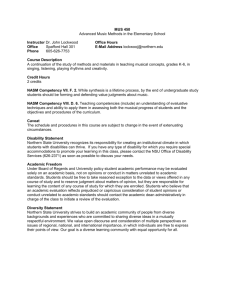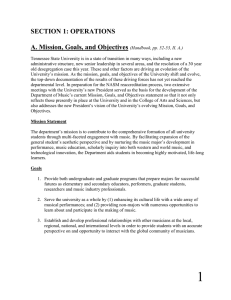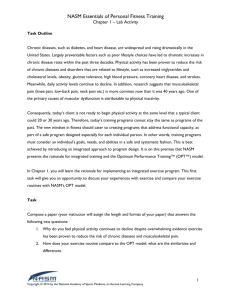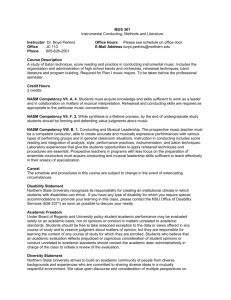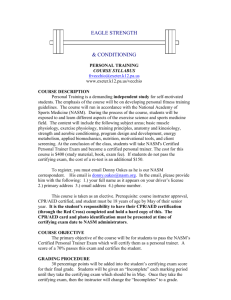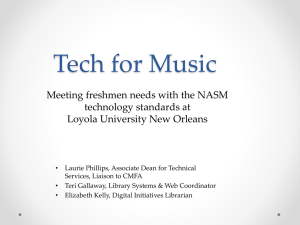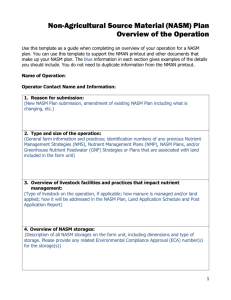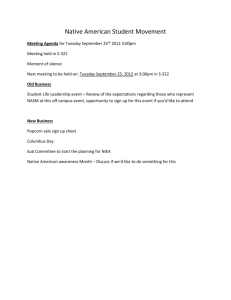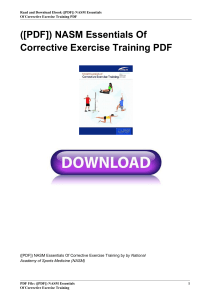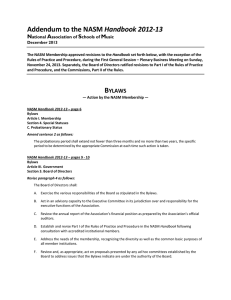B.M., B.A
advertisement
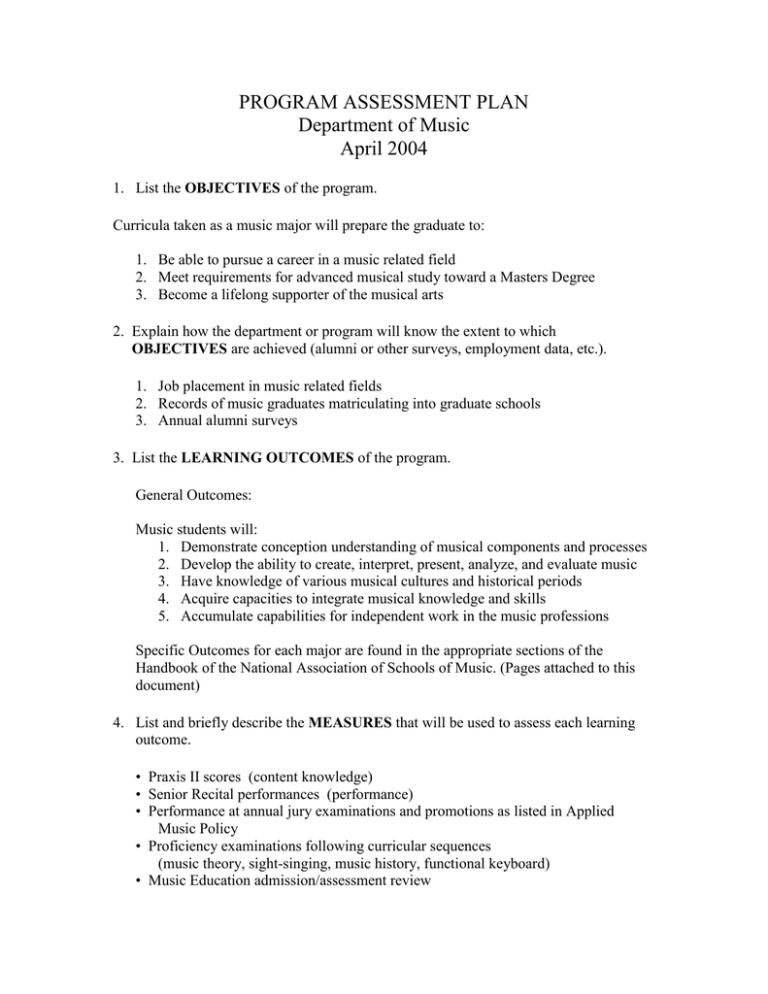
PROGRAM ASSESSMENT PLAN Department of Music April 2004 1. List the OBJECTIVES of the program. Curricula taken as a music major will prepare the graduate to: 1. Be able to pursue a career in a music related field 2. Meet requirements for advanced musical study toward a Masters Degree 3. Become a lifelong supporter of the musical arts 2. Explain how the department or program will know the extent to which OBJECTIVES are achieved (alumni or other surveys, employment data, etc.). 1. Job placement in music related fields 2. Records of music graduates matriculating into graduate schools 3. Annual alumni surveys 3. List the LEARNING OUTCOMES of the program. General Outcomes: Music students will: 1. Demonstrate conception understanding of musical components and processes 2. Develop the ability to create, interpret, present, analyze, and evaluate music 3. Have knowledge of various musical cultures and historical periods 4. Acquire capacities to integrate musical knowledge and skills 5. Accumulate capabilities for independent work in the music professions Specific Outcomes for each major are found in the appropriate sections of the Handbook of the National Association of Schools of Music. (Pages attached to this document) 4. List and briefly describe the MEASURES that will be used to assess each learning outcome. • Praxis II scores (content knowledge) • Senior Recital performances (performance) • Performance at annual jury examinations and promotions as listed in Applied Music Policy • Proficiency examinations following curricular sequences (music theory, sight-singing, music history, functional keyboard) • Music Education admission/assessment review 5. Describe how learning outcomes are made MEASURABLE and BENCHMARKS or other determinants of success are set. 1. At least 80% of music education students pass Music Content Knowledge Praxis II examination. 2. Performance levels reviewed by music faculty relative to similar NASM institutions. 6. Describe the process by which FINDINGS will be derived from the measures. Faculty from the Department of Music will review data at the annual Fall Conference Meetings. • Academic Studies Sub-Committee of Music Education Faculty will review music education students admission into degree program. • Performance Study Sub-Committee of Applied Faculty will review performance standards and results of juries and recitals. • Area faculty will analyze results of proficiency examinations. 7. Describe the process by which findings are analyzed to determine what IMPROVEMENTS should be made to better meet objectives and learning outcomes. Departmental committees and area faculty will review findings at the annual fall conference and make recommendations for improvements to the Faculty Committee. 8. Identify a TIMETABLE for assessment. As a full member of the National Association of Schools of Music (NASM), the Department of Music at Wright State University follows the 10-year cycle of review as mandated by NASM. Within this 10-year cycle the Department of Music will conduct a yearly assessment of items listed above, with an internal cumulative assessment in year 5, and a cumulative assessment as part of the NASM re-accreditation process in year 9 and 10. 9. Briefly explain how the program’s assessment plan supports and interacts with ACCREDITATION and LICENSURE requirements (if applicable). The Department of Music is a full member of the National Association of Schools of Music (NASM). As a member the Department complies with all the standards of this accreditation agency. The standards are printed yearly in the NASM Handbook. 10. Describe how the objectives and learning outcomes of the program are COMMUNICATED to students and others. 1. Objectives and learning outcomes will be printed and distributed to students at the music student convocation each September. 2. Objectives and learning outcomes will be printed and distributed to the Department of Music Community Advisory Committee and Alumni Advisory Committee. 3. Objectives and learning outcomes will be published on the Department of Music Website.
